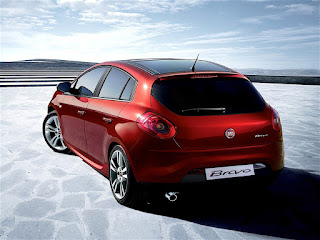Moving on from the super abstract preamble, and on to the (fun) topic of the day: cricket! If you are a cricket fan, you would know how important the concepts of 'line' and 'length' are for bowlers. Length defines how close or far away on the pitch did the bowler place the ball, in relation to the batsman (short ball = it will bounce up near batsman's waist or higher; full ball = it will bounce near his toes). Line defines whether the bowler placed the ball close to the stumps (and thus batsman's body) or farther away. The pitch map below illustrates length.

Every single trick a bowler has (swing, seam, spin, bounce)...it all boils down to where he places the ball, line and length wise. And yet we have such rudimentary language to describe line and length. As you can see in the pitch map, length has just 4 very broad buckets - short, good length, full, and yorker (see example pitch map below). Of which really 'Good' is the main length you are aiming for most often (let's keep aside the confusion that a term like 'good' can introduce). Commentators and coaches end up using vague language like 'just short of good length' as a way of describing certain bowling strategies. Line has it even worse. If you have bowled right on the stumps (the blue vertical bar above), then that's easy to describe as 'on the stumps'. Else you are left saying things like "Philander just sent down a great ball in the corridor outside the stumps, around the area of the virtual 5th stump". What the!
Given my preamble about the importance of words and lexicon, you can probably see where this is going. So my suggestion is simple: let's introduce a more scientific and descriptive notation system for lines and lengths. As you can see from the pitch map, even though the cricket pitch is fairly wide, bowlers place their deliveries in a pretty narrow band. So I suggest we label out the corridors alphabetically. See below. L is Left stump; M is Middle stump; R is Right stump. On the offside corridor, you start with A and keep going outwards. And on the legside corridor, you start with X and keep going (you can use AA after Z, but few bowlers ever pitch that wide out).
Next we solve for length. First we start a measurement clearly from the crease. Then we have a simple numerical notation: box 1 is the one closest to the crease, box 2 after that and so soon. I am suggesting 7 boxes to go up to the half-way mark, so you can get a lot more descriptive than 'full' / 'good' / 'short of good length' (whatever the hell that is) / and 'short'. But really, it could be any number of boxes so long as it's standardized.
And as soon you place the two together, you are able to describe very specific set pitch placement points ("if you want to aim an uncomfortable ball into the ribcage, box B3 is where you are aiming for", instead of a vague "pitch it on a good length somewhat outside the stumps").
I think the benefits are endless. Some use cases:
1. This lexicon can make life easier for the likes of bowlers like Ishant Sharma. A difficult to follow instruction like "you are a hit-the-deck bowler which is great, but you sometimes need to slip in wicket taking deliveries ie pitch fuller without going too full" would become a much easier "you are usually in zone 5; try slipping in some zone 4s occasionally".
2. Young bowlers can also become much more targeted in their training programs ("I am going to keep aiming for L3-A3-B3 as my sweet spot").
3. Pitching strategies can become more sophisticated depending on conditions ("this is a bouncy pitch; you all need to move half a zone up to achieve same level of bounce. Ishant - try first half of zone 3 instead of zone 4"). I am sure this happens today but now we are getting more descriptive and tangible.
4. Measurement. As Peter Drucker said, If you can't measure it, you can't improve it. Coaches and bowlers everywhere can start measuring their lines and lengths in a consistent manner and thus start becoming better players. I could even imagine training pitches physically getting physical grid lines so that bowlers can see where they are pitching with what type of action. Out of form bowlers would know exactly what's going wrong with their pitching. The continuous improvement might become a cat and mouse game: batsmen would learn where certain bowlers like to pitch; they might change their crease position accordingly; bowlers would then adjust and so on.
You might say this isn't some great new concept, and it isn't! To go back to the idea at the start of the blog, advanced vocabulary that give shape to advanced thoughts (and correspondingly, advanced behaviors). Time we applied some advanced vocabulary to cricket's age old concepts of line and length. What do you think?
Disclaimer: I am a true armchair critic when it comes to cricket. Never played anything more than the most rudimentary tennis-ball gully cricket. And haven't been following the professional game either for several years now, so I might be outdated in some areas













































